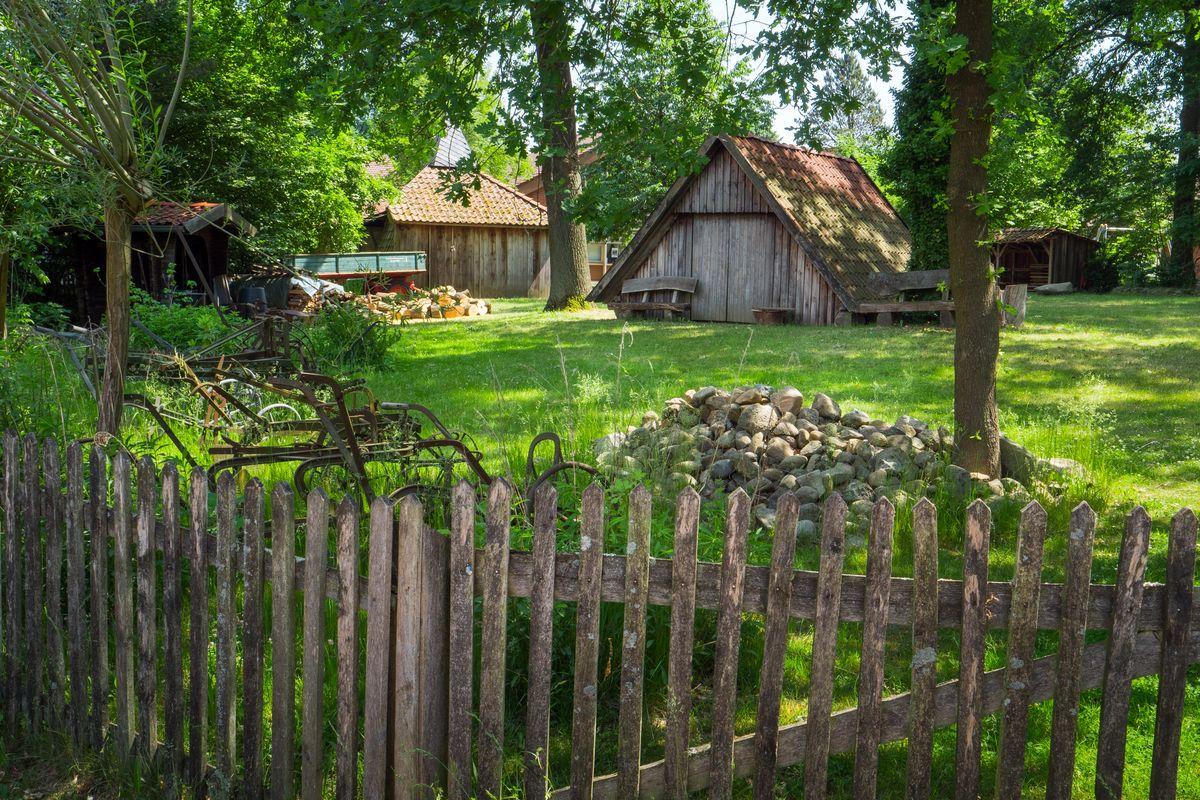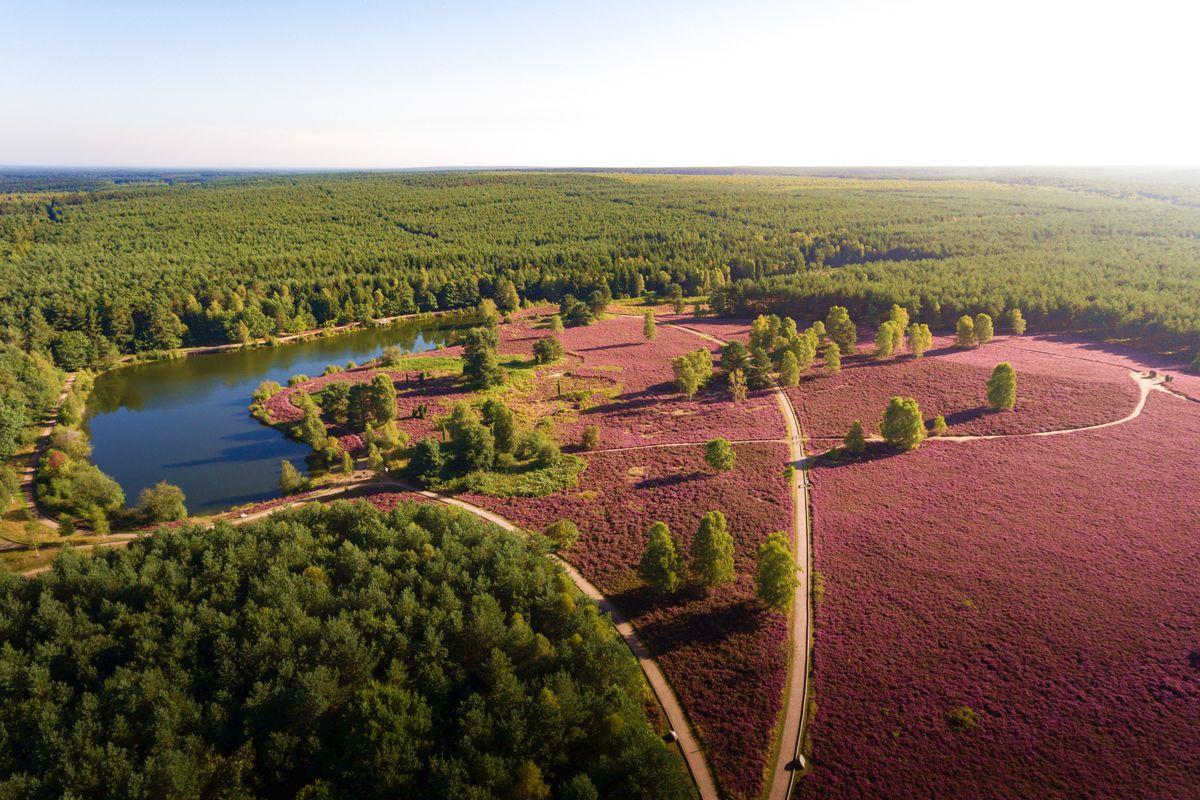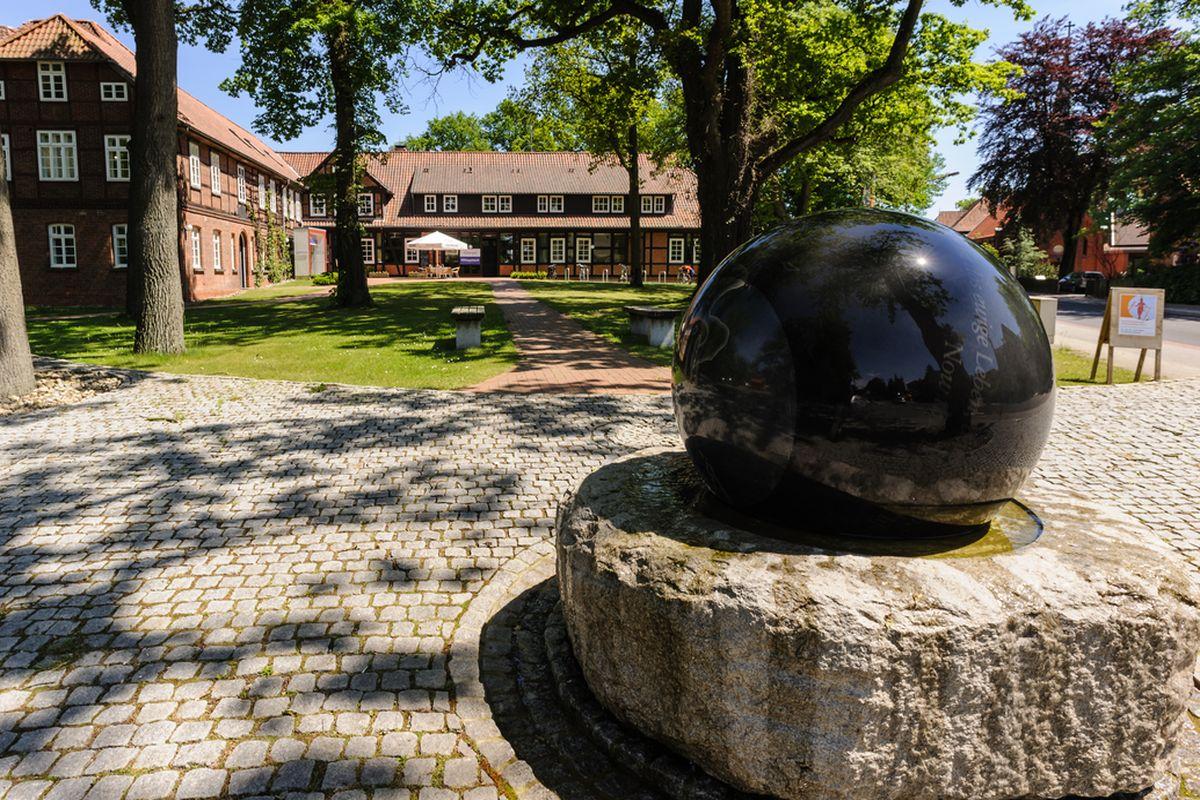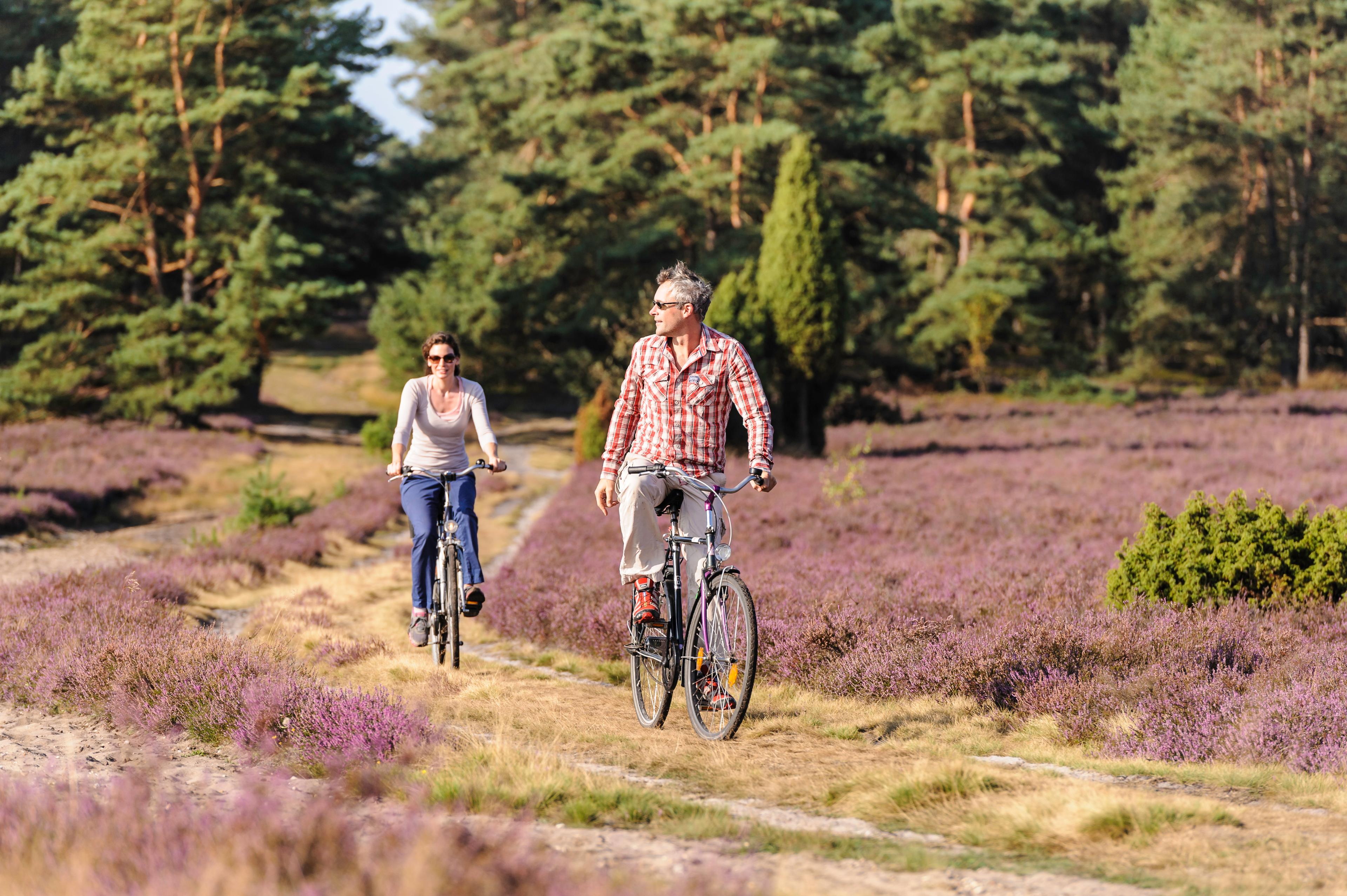
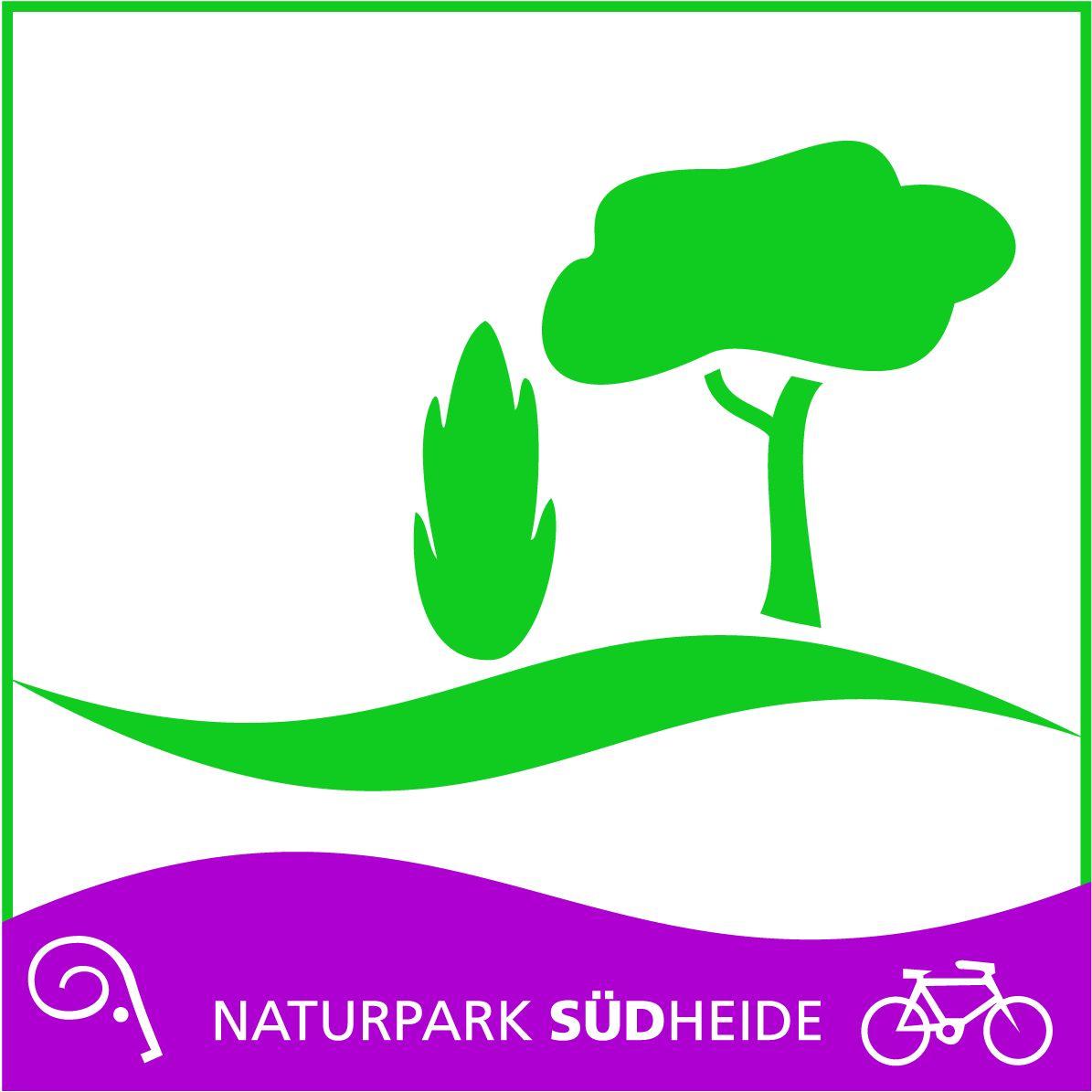
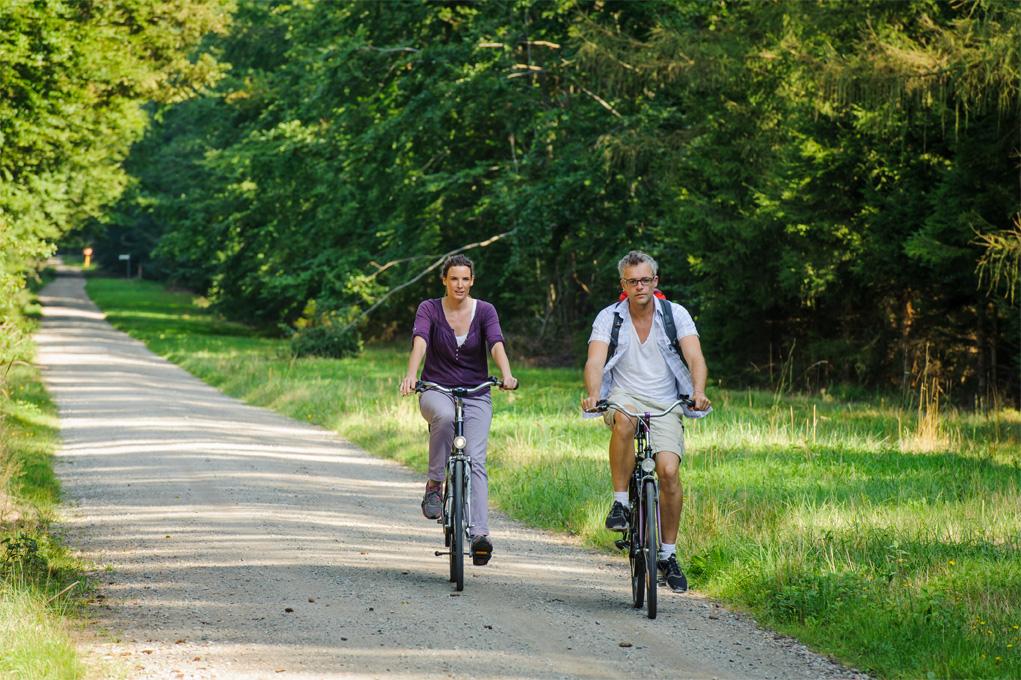
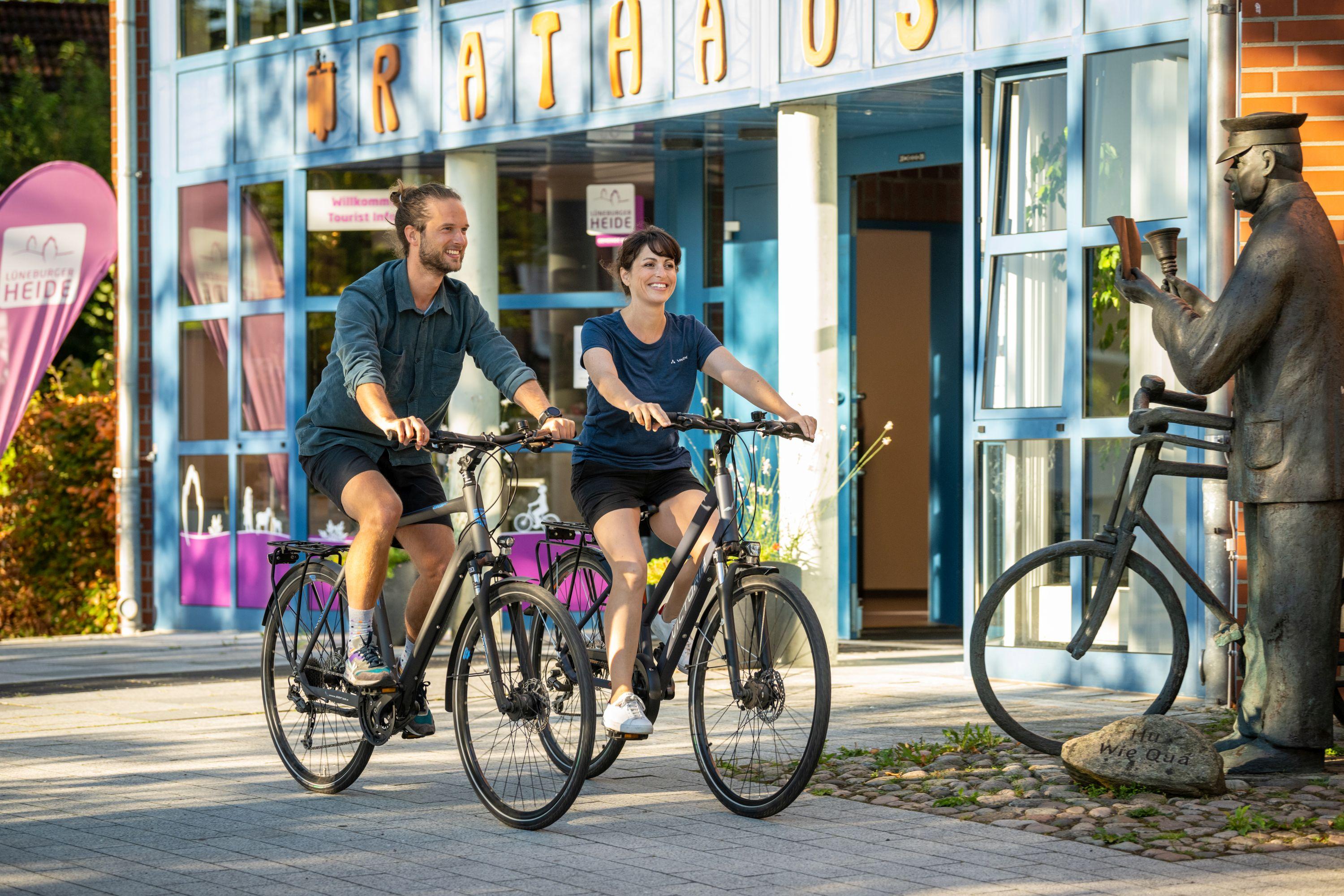
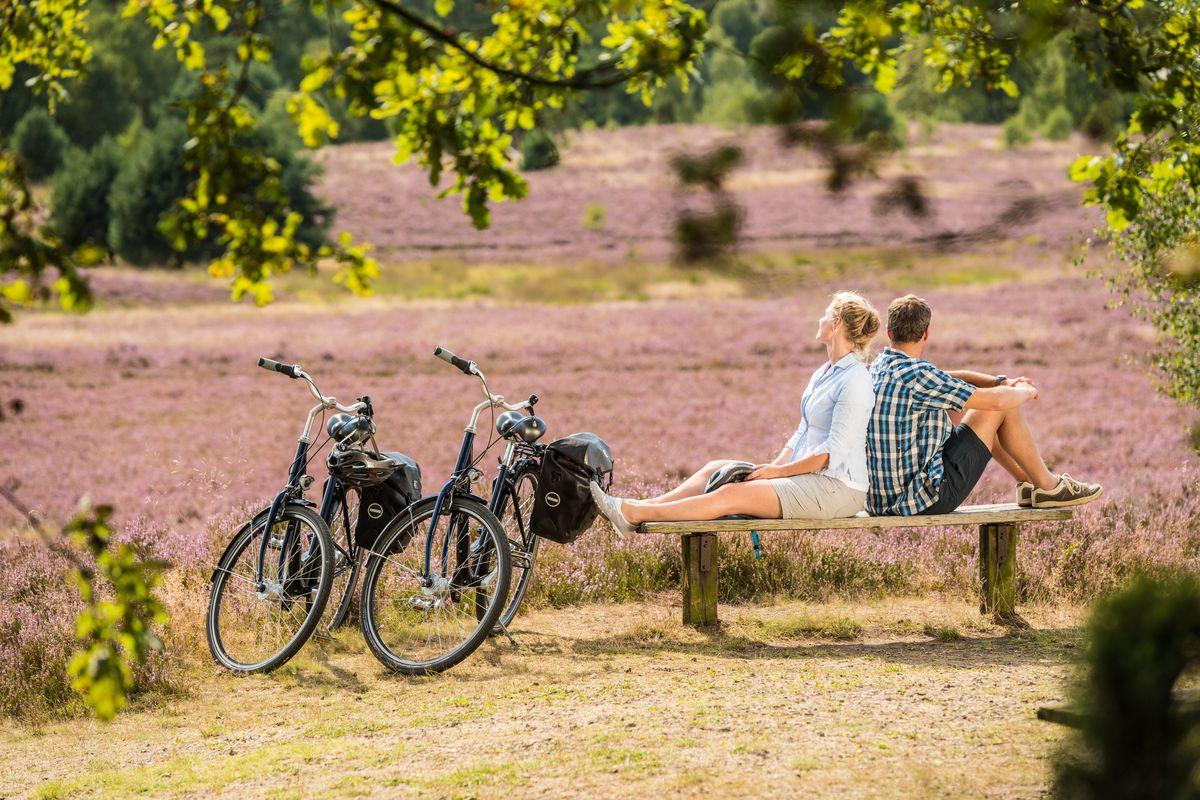
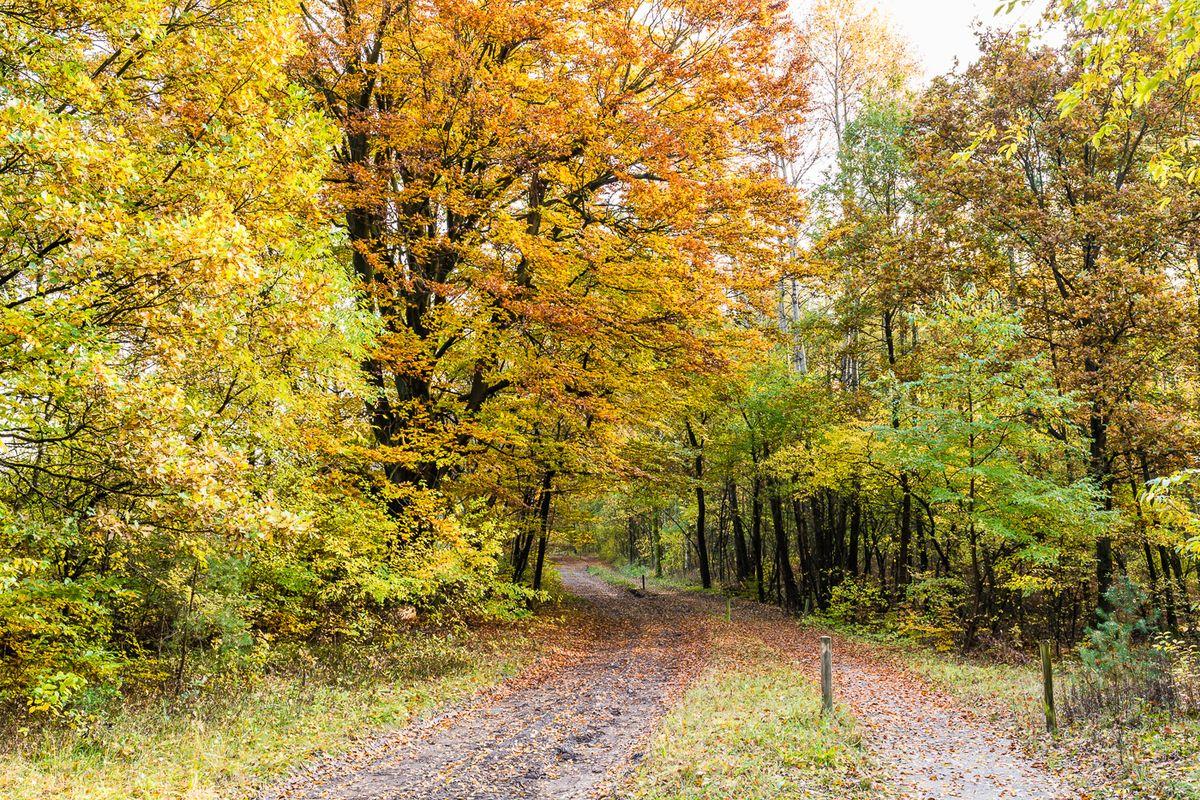
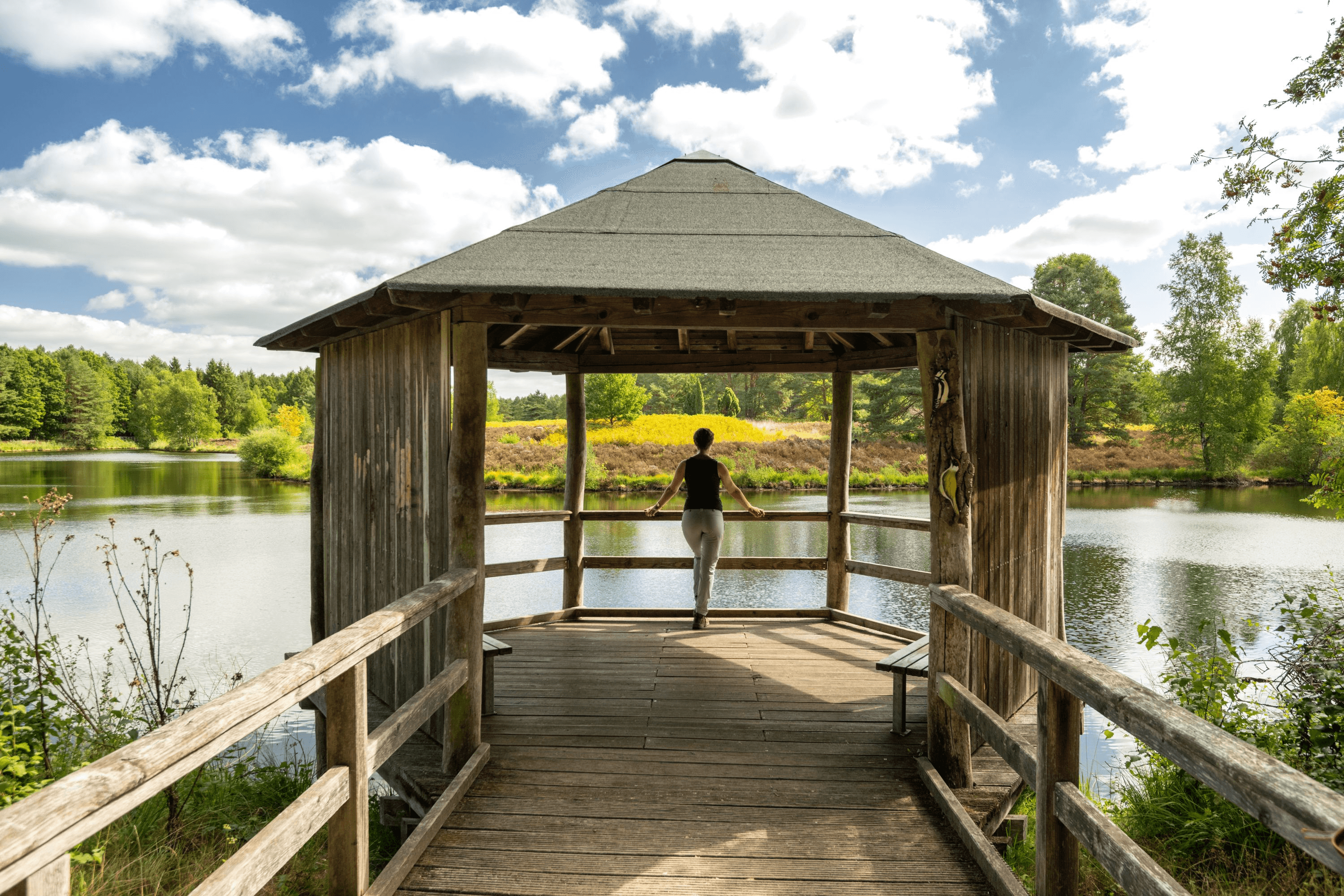
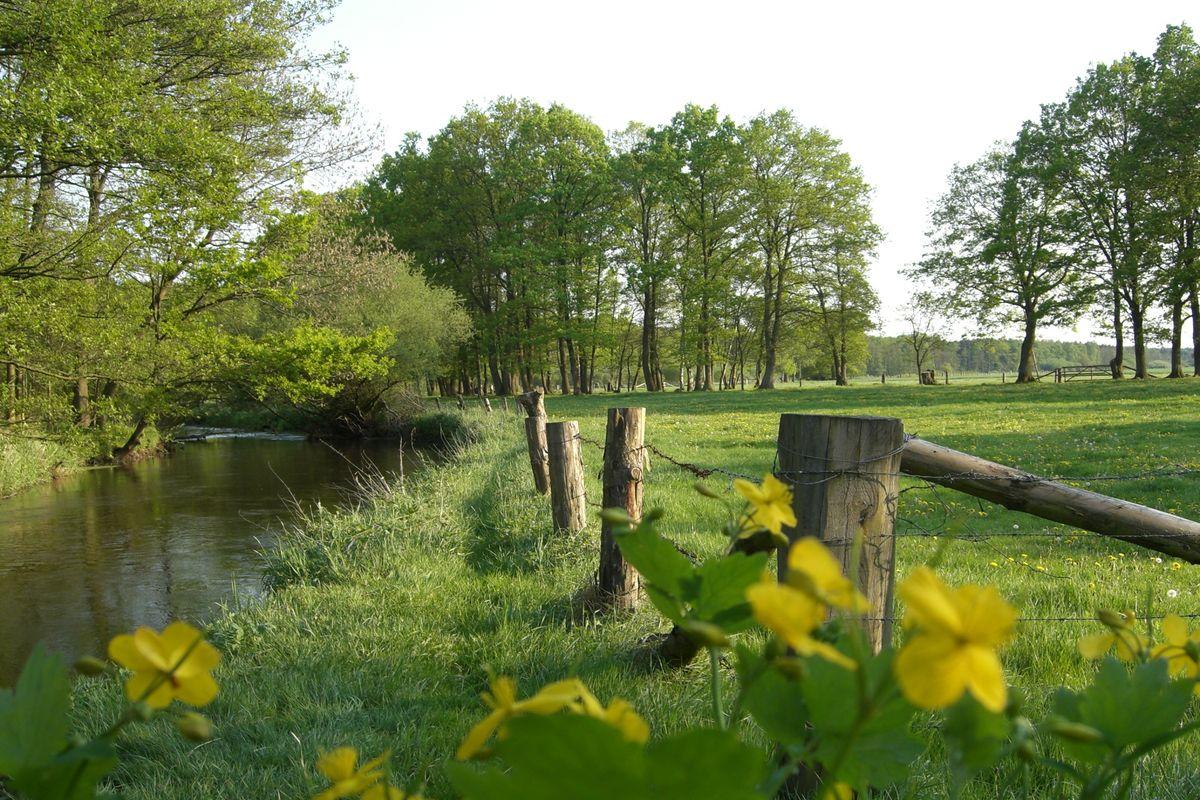
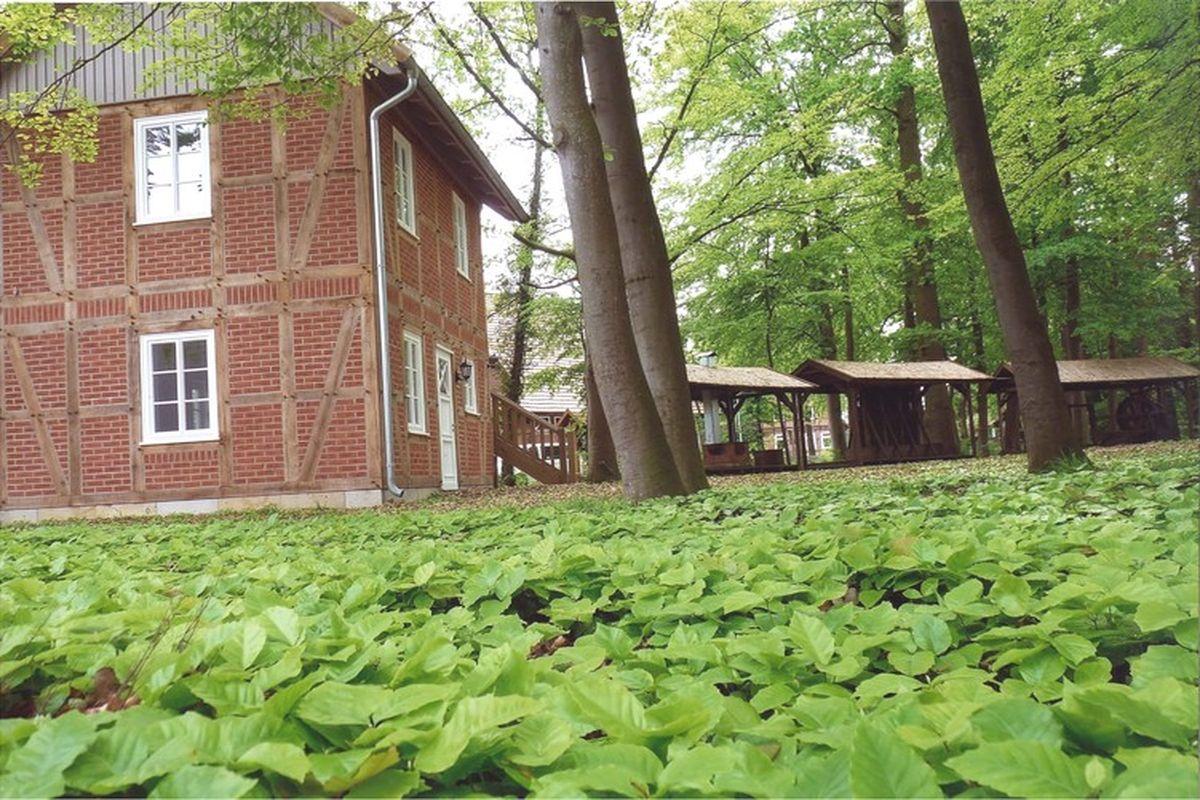
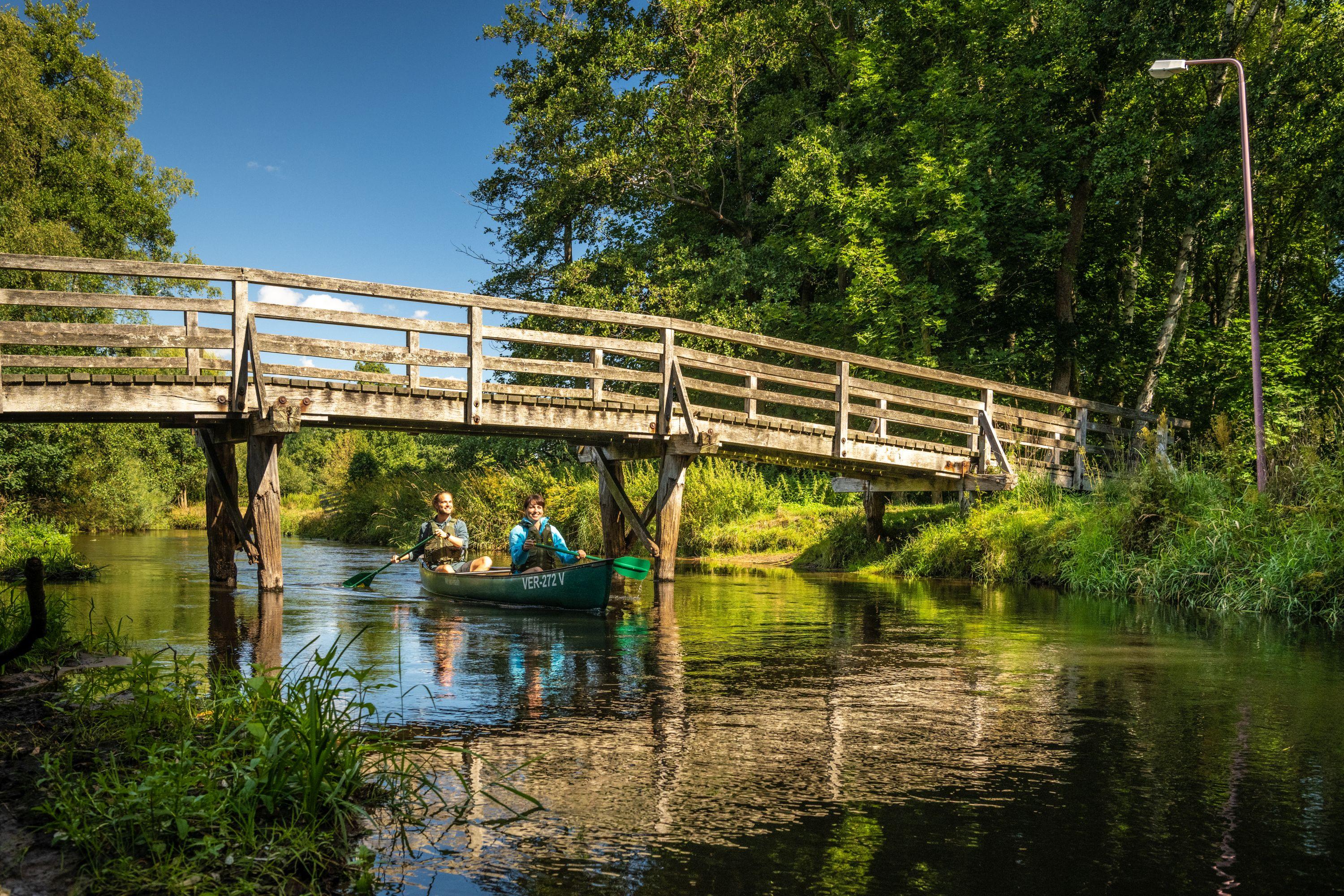
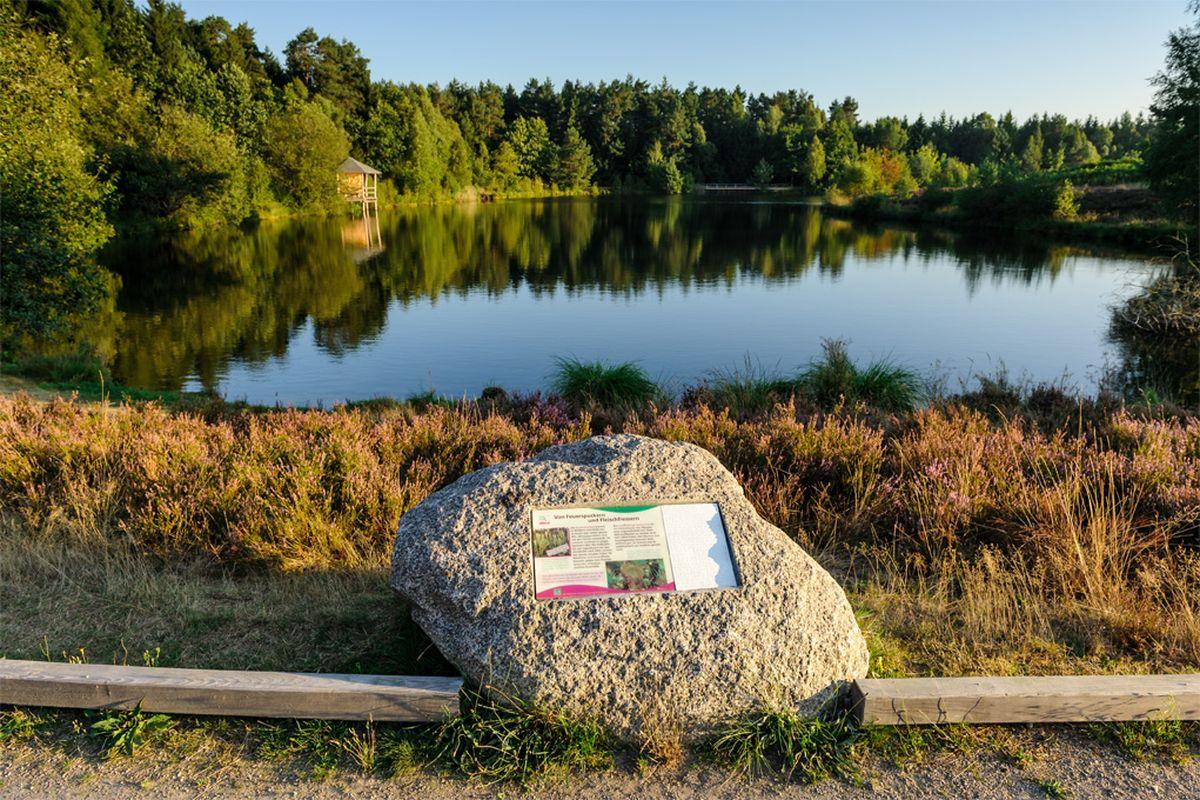
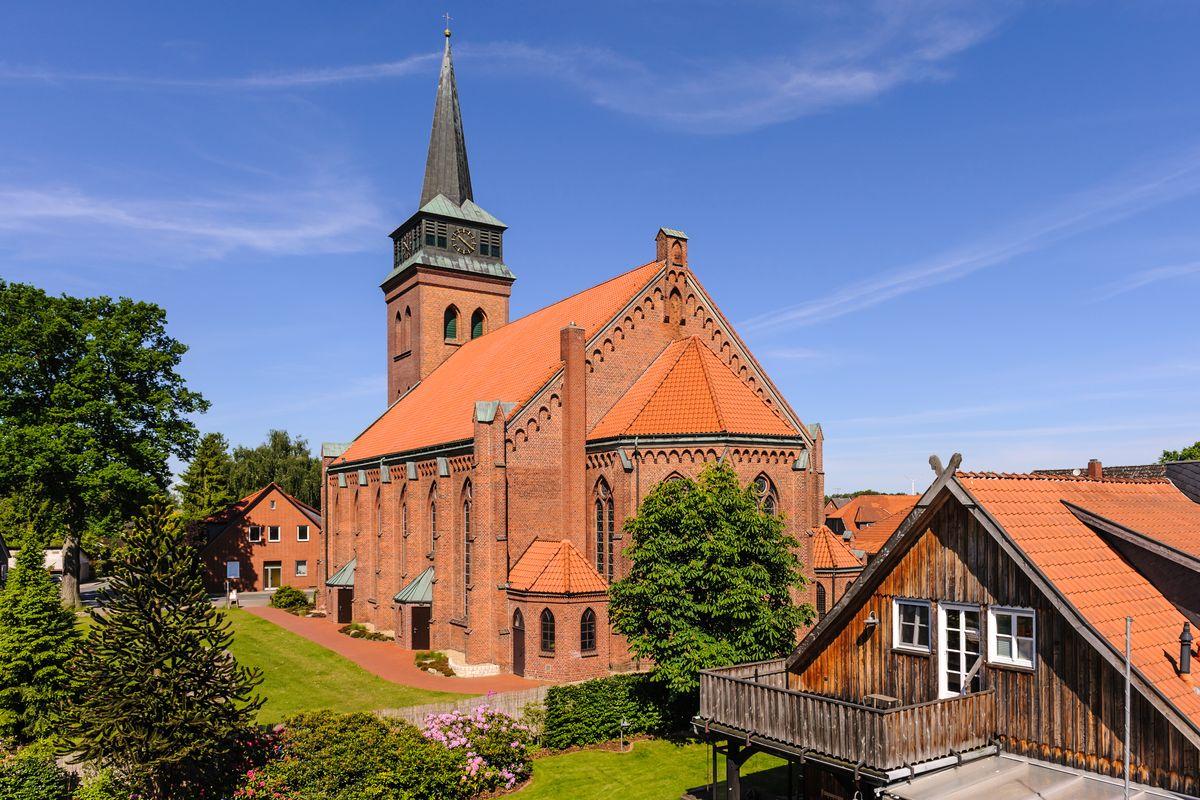
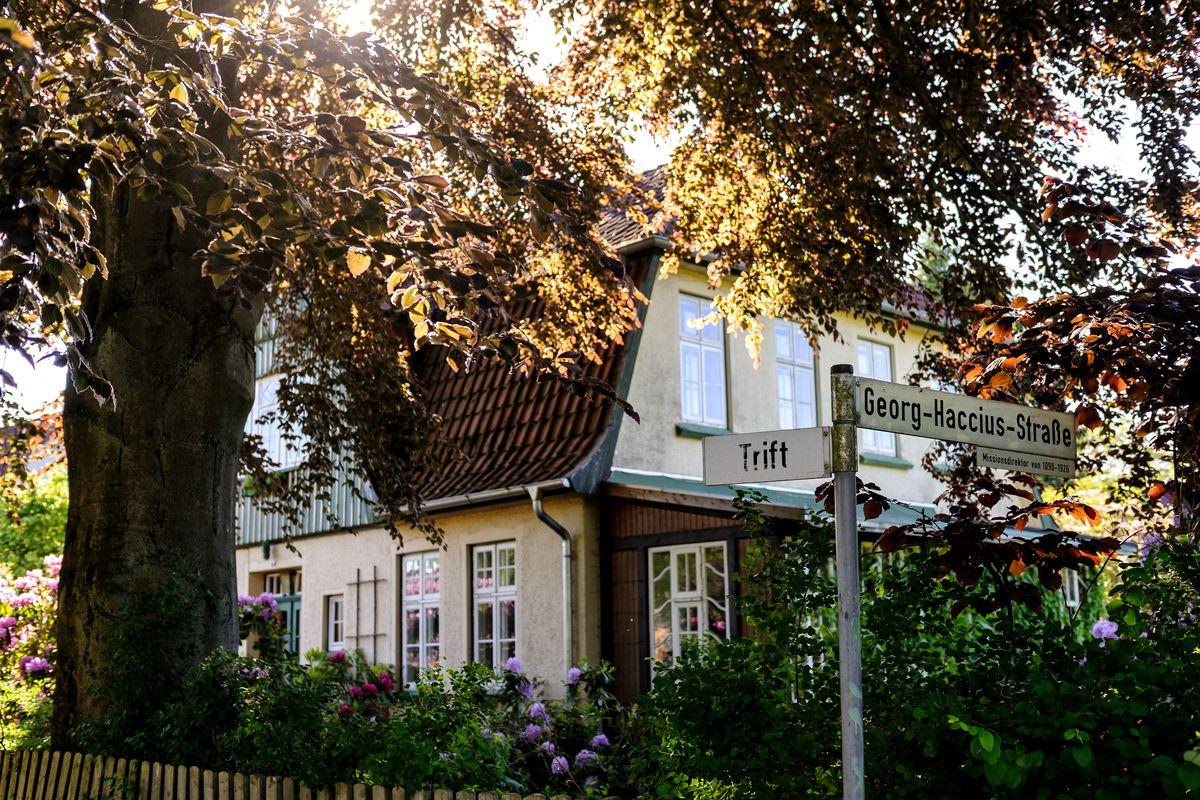
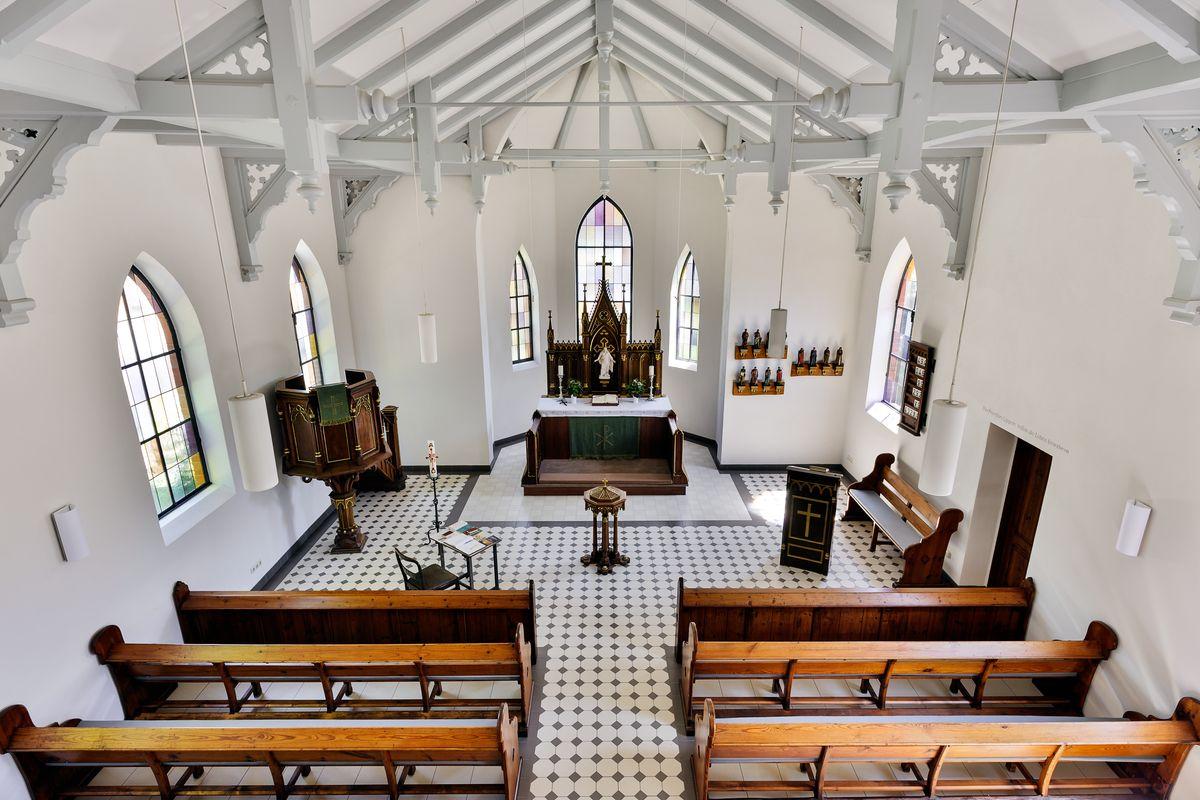
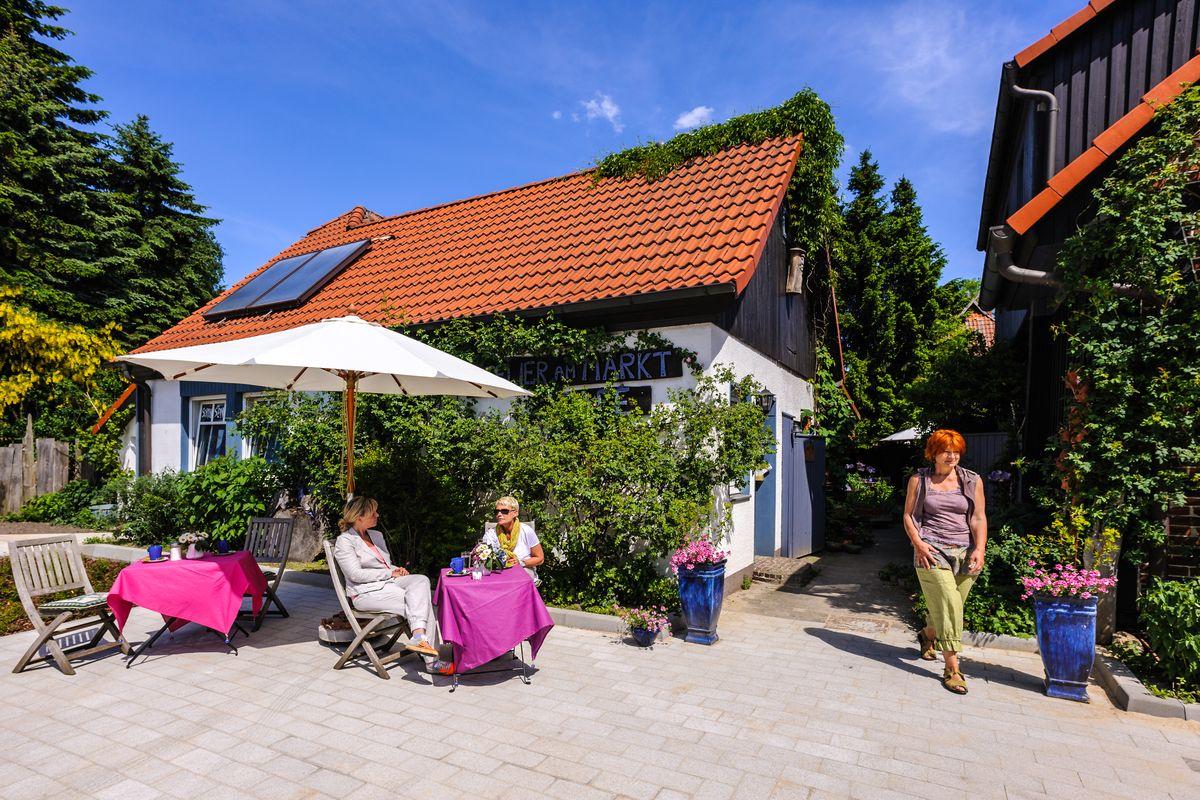
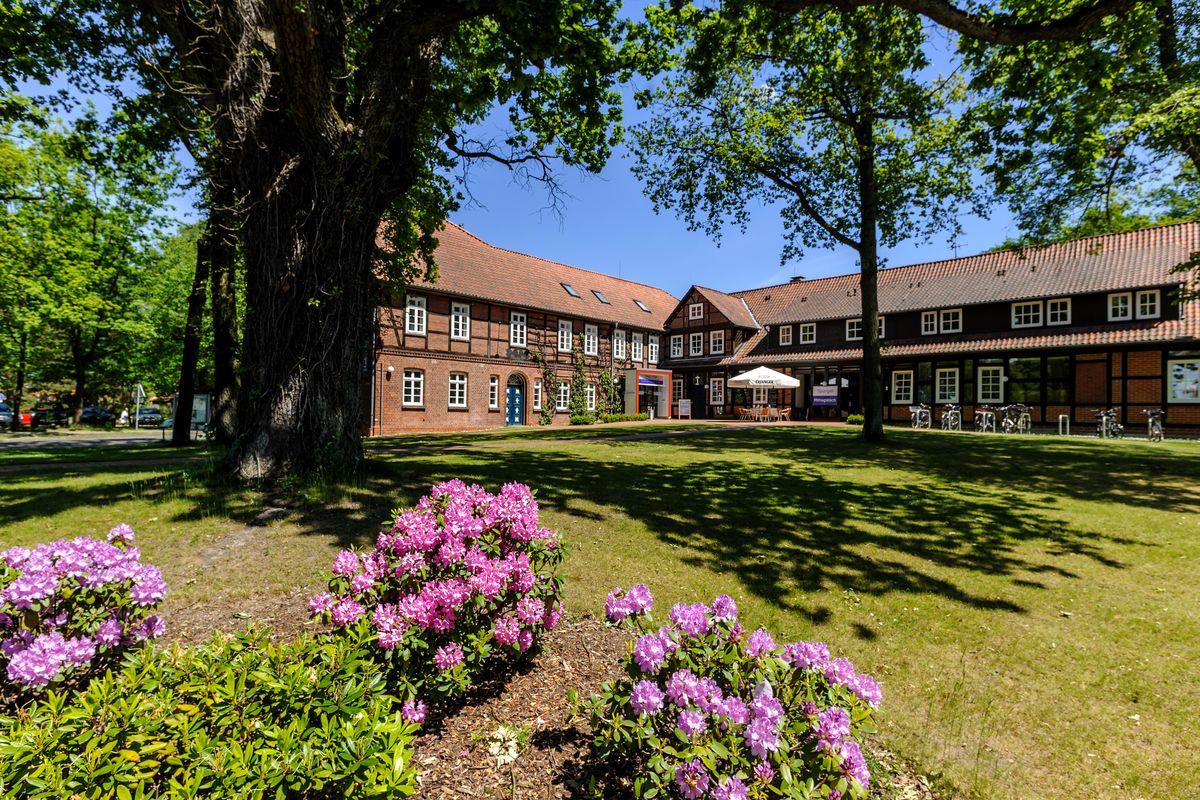
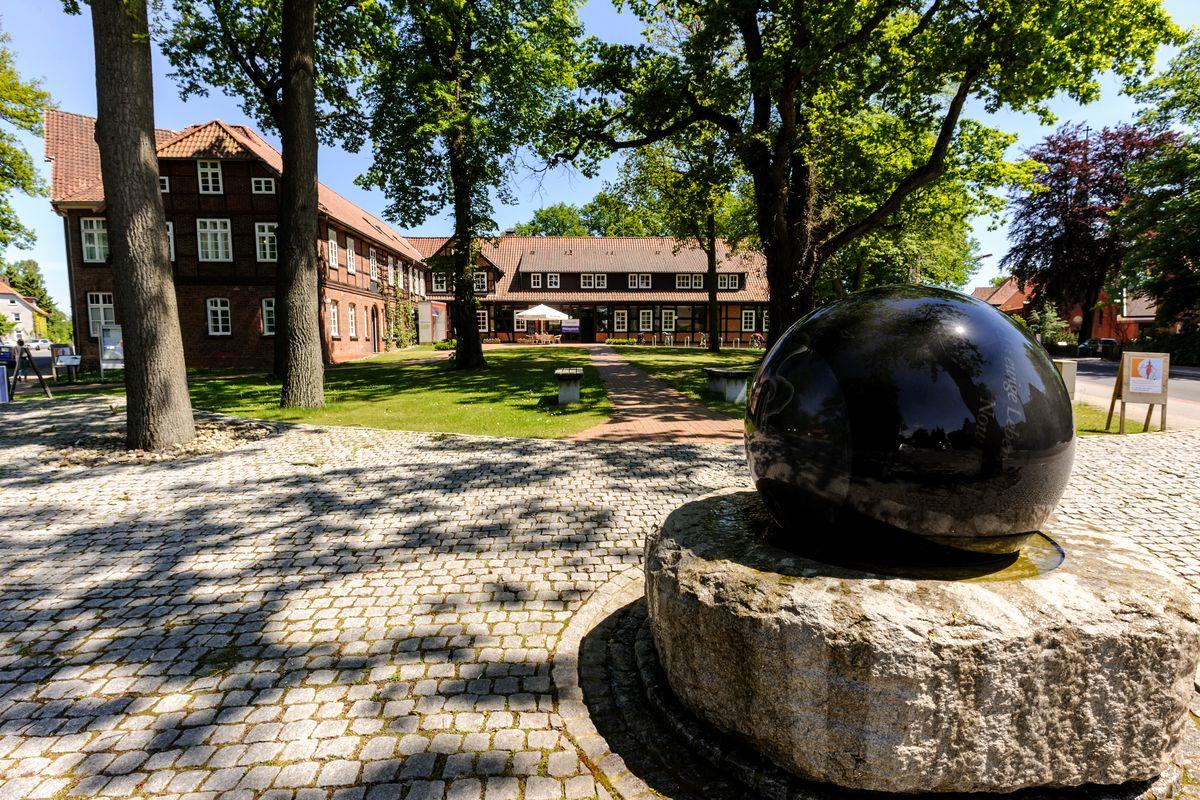
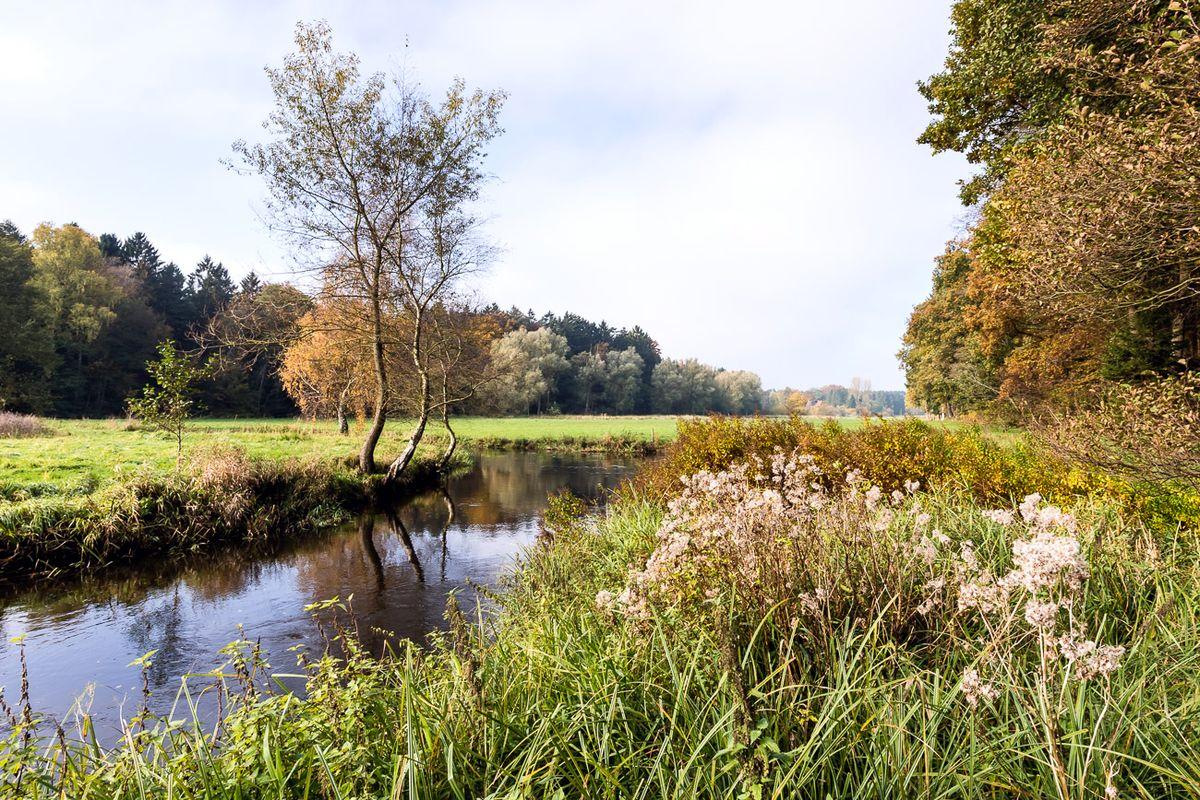
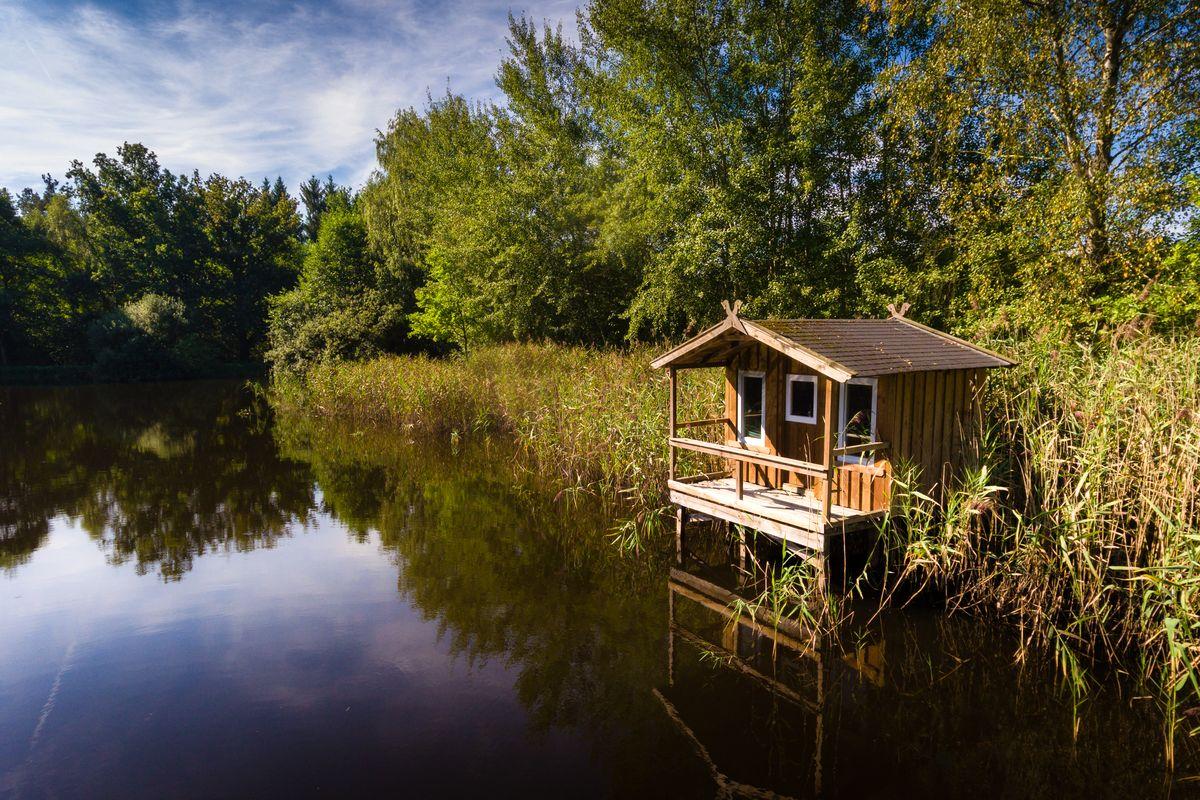


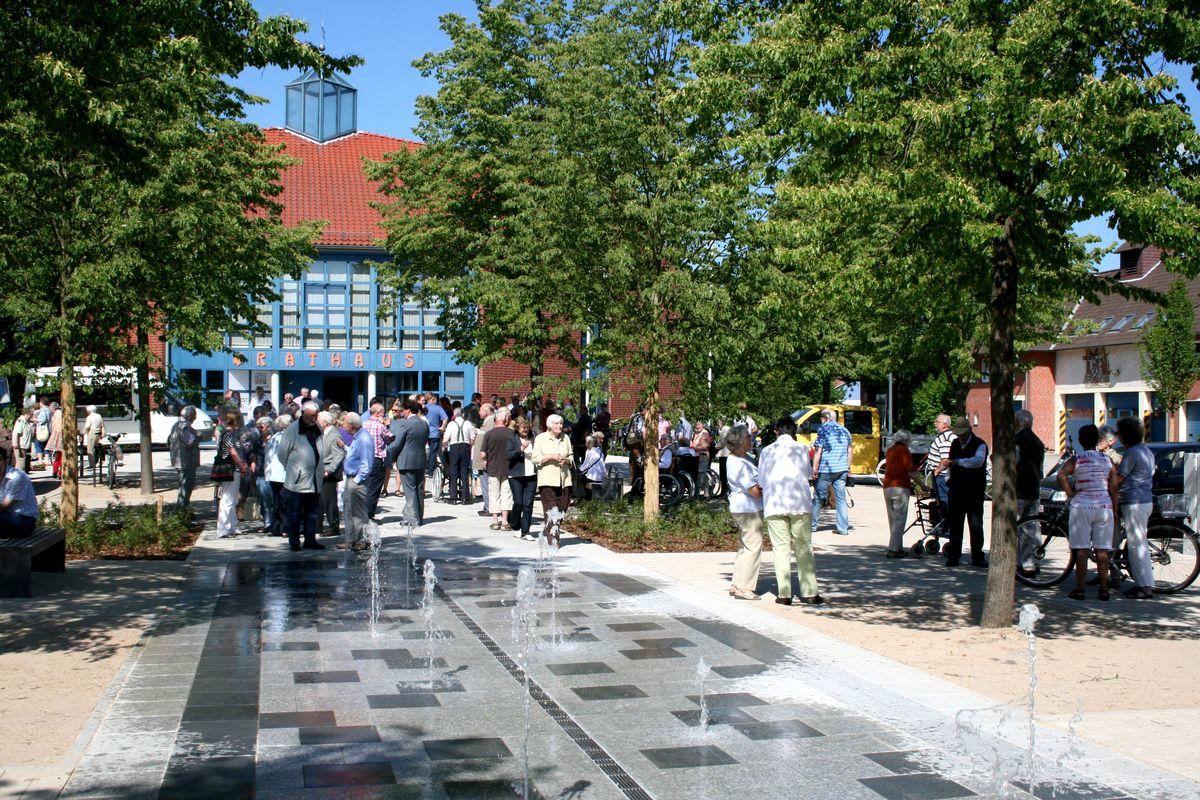
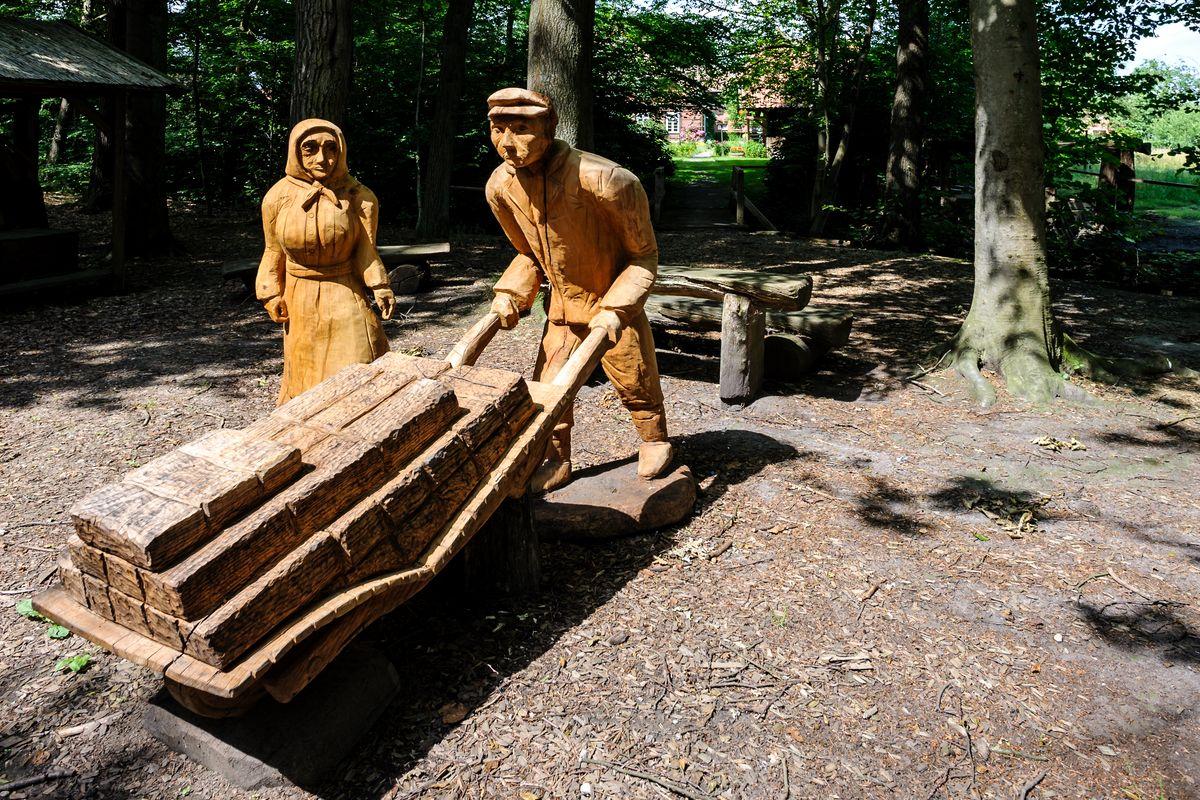
A day-tour by bicycle in Suedheide
Nature Park through the Oertze lowland.
Cycle through the diversified
countryside and the typical, small heath village of Oldendorf, Suelze and
Eversen.
Small wooden bridges along the
Rover Oertze invite you to rest awhile and enjoy the view of the Oertze valley.
Interesting observations of local wildlife can be made here.
The bicycle tour returns through
woodlands and heath areas to the point of departure.
The bicycle tour is suitable for
children thanks to its largely flat and even surfaces.
Tip: Take a break at Salinenhaus in Suelze.
Oertze, river of the heath
The source of the river Oertze is
located on the military training grounds at Munster-Nord, from where it flows
south until it joins the river Aller in Winsen.
A strong feed of groundwater keeps
the water of the Oertze permanently cool. It is also known as a “summer-cold”
heath river. The largely pristine riverbed winds like a serpentine through the
broad Oertze valley, where depressions, steep banks and interchanging gravel
and sand banks bear witness to the river’s structural richness.
The water’s high quality and the
surrounding meadows and woodlands help support a very diverse flora and fauna.
Brown trout and bullheads are just as much at home here as kingfishers and fish
otters. Yellow water iris and ragged robin flower near the river’s banks.
The inclusion of the Oertze river
system in the European protection scheme Natura 2000 emphasises its high
ecological importance.
Salt production
The name Suelze is a reference to
the saline source located in the vicinity.
The salt was thickened at the local
graduation house before it was transported to the simmering houses. A model at
the new information house explains how the saline concentration was produced.
The process required large quantities of peat that was dug up around the village
of Suelze. Numerous simmering houses were erected to simmer the water out of
the saline concentrate in iron pans.

